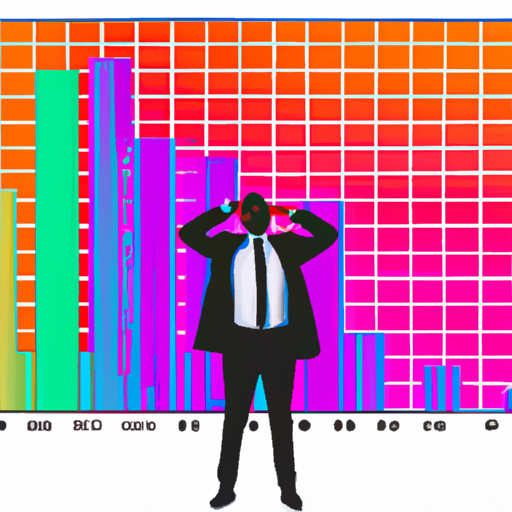Understanding Heteroscedasticity and its Impact on AI in Business
Introduction
As artificial intelligence (AI) becomes more prevalent across industries, it is crucial for business owners to understand the potential challenges that may arise during the implementation of AI models. One important concept to be aware of is heteroscedasticity, which can significantly affect the accuracy and reliability of AI predictions. This article aims to discuss what heteroscedasticity is, how it relates to AI, and its potential impact on businesses.

What is Heteroscedasticity?
Heteroscedasticity refers to a pattern observed in data where the variance of the errors or residuals in a regression model is not constant across all levels of the independent variables. In simpler terms, it means that the spread of the errors is not the same throughout the range of the data.
To illustrate this, imagine you have a dataset of housing prices, where the independent variable is the size of the houses, and the dependent variable is the price. In a heteroscedastic dataset, you may notice that the errors between predicted and actual prices vary significantly depending on the size of the houses. In other words, the deviation from the predicted price may be consistent for smaller houses but increase as the size of the houses grows.
Heteroscedasticity and AI
When training AI models, heteroscedasticity can lead to biased and inefficient predictions. This is because the unequal spread of errors in the data violates a key assumption of many AI algorithms known as homoscedasticity, which assumes that the variance of the errors is constant.
AI models, such as regression, rely on minimizing the sum of squared errors to find the best-fit line or curve to make predictions. However, in the presence of heteroscedasticity, the model may place more emphasis on minimizing errors in areas with smaller variances, leading to inaccurate predictions in regions with larger variances.
Impact on Businesses
Heteroscedasticity poses several potential challenges for businesses implementing AI models. Here are a few key areas where heteroscedasticity can impact business operations:
-
Prediction Accuracy
- Heteroscedasticity can affect the accuracy of predictions made by AI models.
- The spread of errors differing significantly across different subsets of the data compromises the model's ability to make accurate predictions.
- Inaccurate predictions can lead to poor decision-making and potential financial losses for businesses relying on AI for forecasting future sales, demand, or customer behavior.
-
Risk Assessment and Decision-making
- In industries where risk assessment is crucial, such as insurance or financial services, heteroscedasticity can undermine the reliability of risk models.
- Inconsistent errors in predictions can result in misjudging the level of risk associated with certain events or investments.
- Inadequate risk management strategies and potential exposure to unexpected financial losses may arise.
-
Resource Allocation and Optimization
- AI models are often used to optimize resource allocation in various business operations, such as supply chain management or workforce scheduling.
- Failure to account for heteroscedasticity in the data may result in misallocation of resources.
- Overemphasis on certain areas with smaller errors while neglecting regions with larger errors can lead to inefficient resource utilization and suboptimal operational performance.
Addressing Heteroscedasticity in AI Models
To mitigate the impact of heteroscedasticity on AI models, business owners can consider the following strategies:
-
Data Pre-processing and Transformation
- Applying appropriate data pre-processing techniques like log-transformations or robust standardization can help reduce the effect of heteroscedasticity.
- These techniques aim to normalize the data and make the errors more homoscedastic, allowing AI models to perform better.
-
Feature Engineering and Variable Selection
- Businesses should carefully select relevant features and variables for their AI models.
- Considering factors that influence the variance of the errors, such as outliers or interaction terms, can improve the model's performance and reduce heteroscedasticity-related issues.
-
Model Diagnostics and Validation
- Regular model diagnostics and validation are vital for detecting heteroscedasticity and assessing its impact on AI predictions.
- Techniques like residual analysis or the Breusch-Pagan test can help identify the presence of heteroscedasticity and guide necessary adjustments to the model.
-
Choosing Appropriate AI Algorithms
- Certain AI algorithms, such as robust regression or support vector regression, are specifically designed to handle heteroscedasticity and may yield more reliable predictions.
- Business owners should consider these algorithms when dealing with datasets that exhibit heteroscedasticity.
Conclusion
Understanding and addressing heteroscedasticity is essential for business owners when implementing AI models in their operations. By recognizing its potential impact on prediction accuracy, risk assessment, and resource allocation, businesses can take necessary steps to pre-process the data, optimize their models, and make more informed decisions based on reliable AI predictions. As AI continues to evolve, being aware of the challenges posed by heteroscedasticity will contribute to leveraging AI's full potential in driving business success.